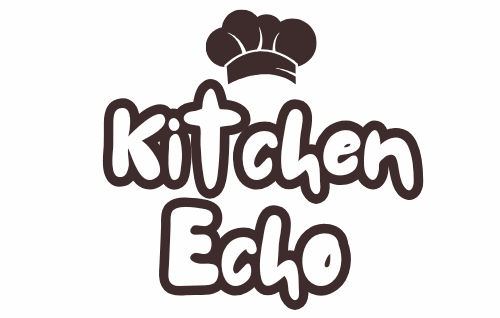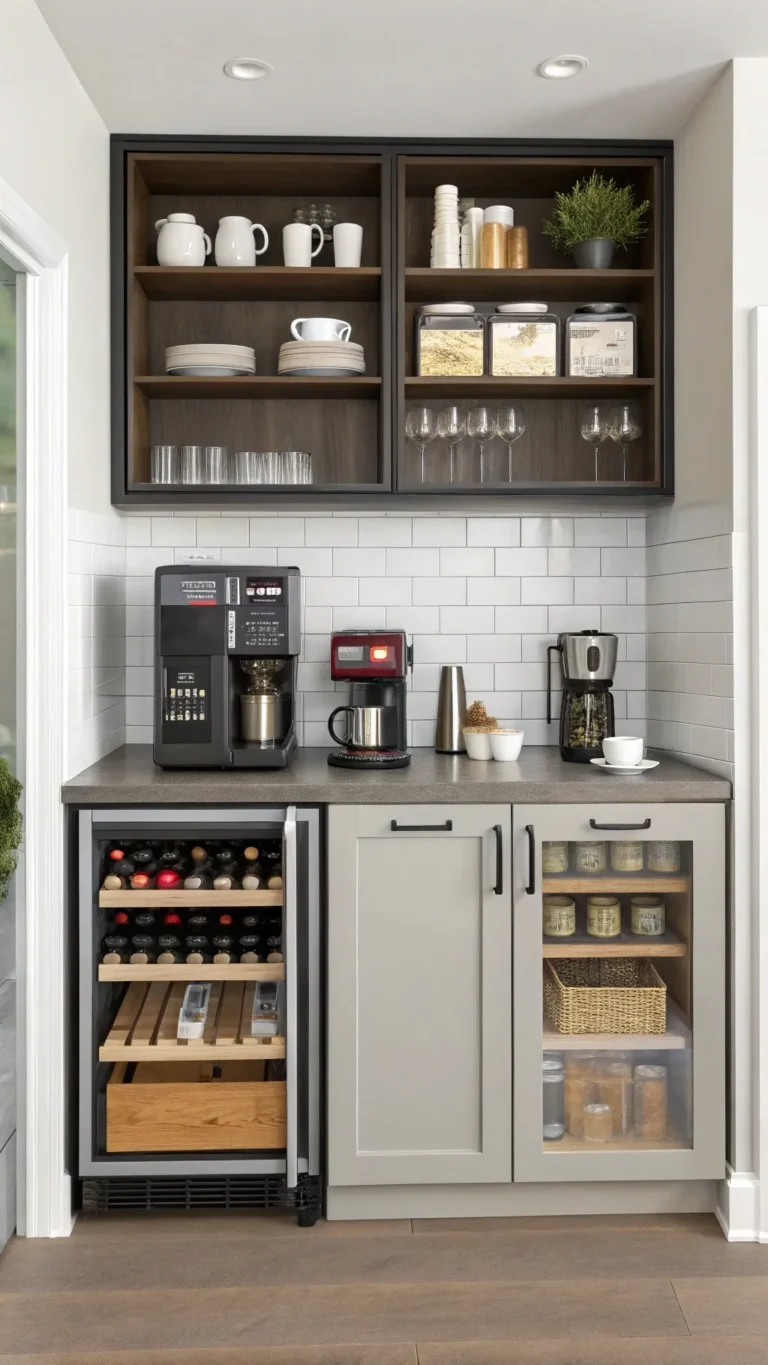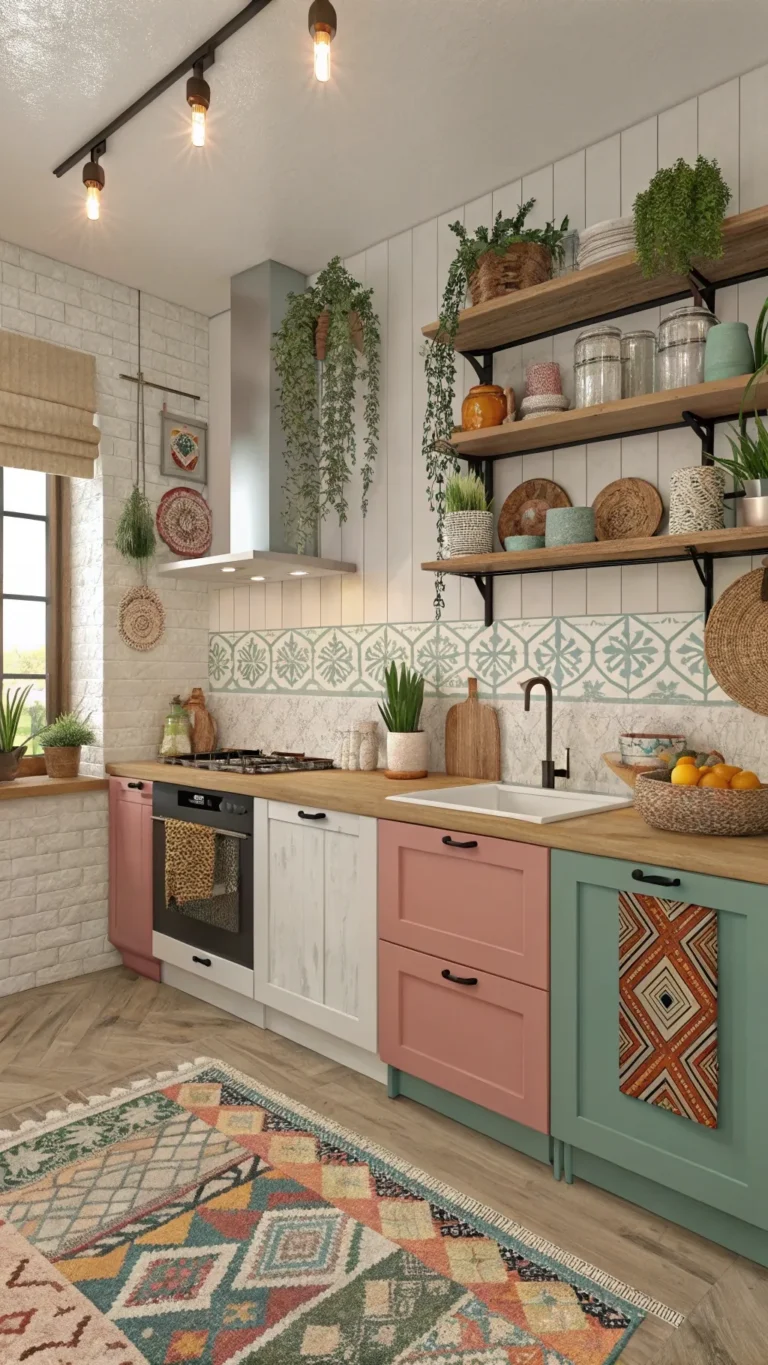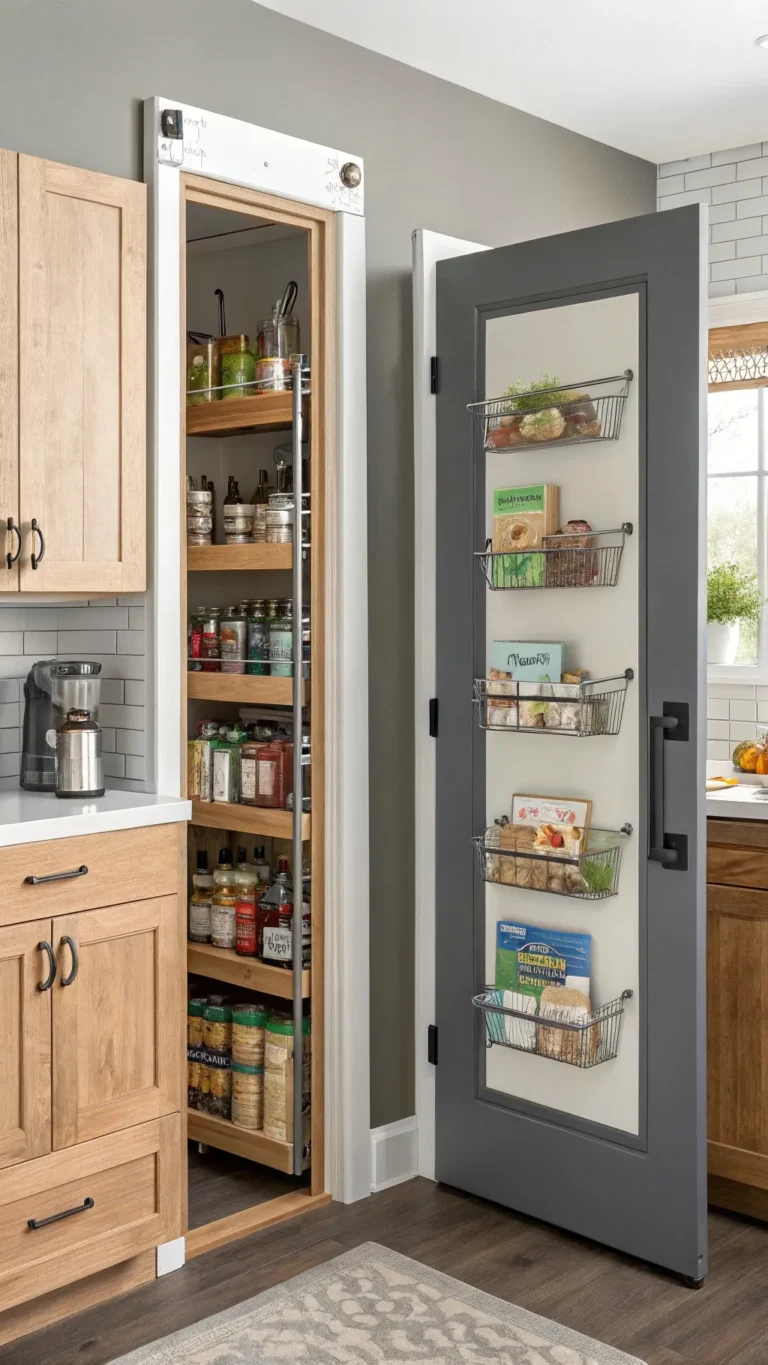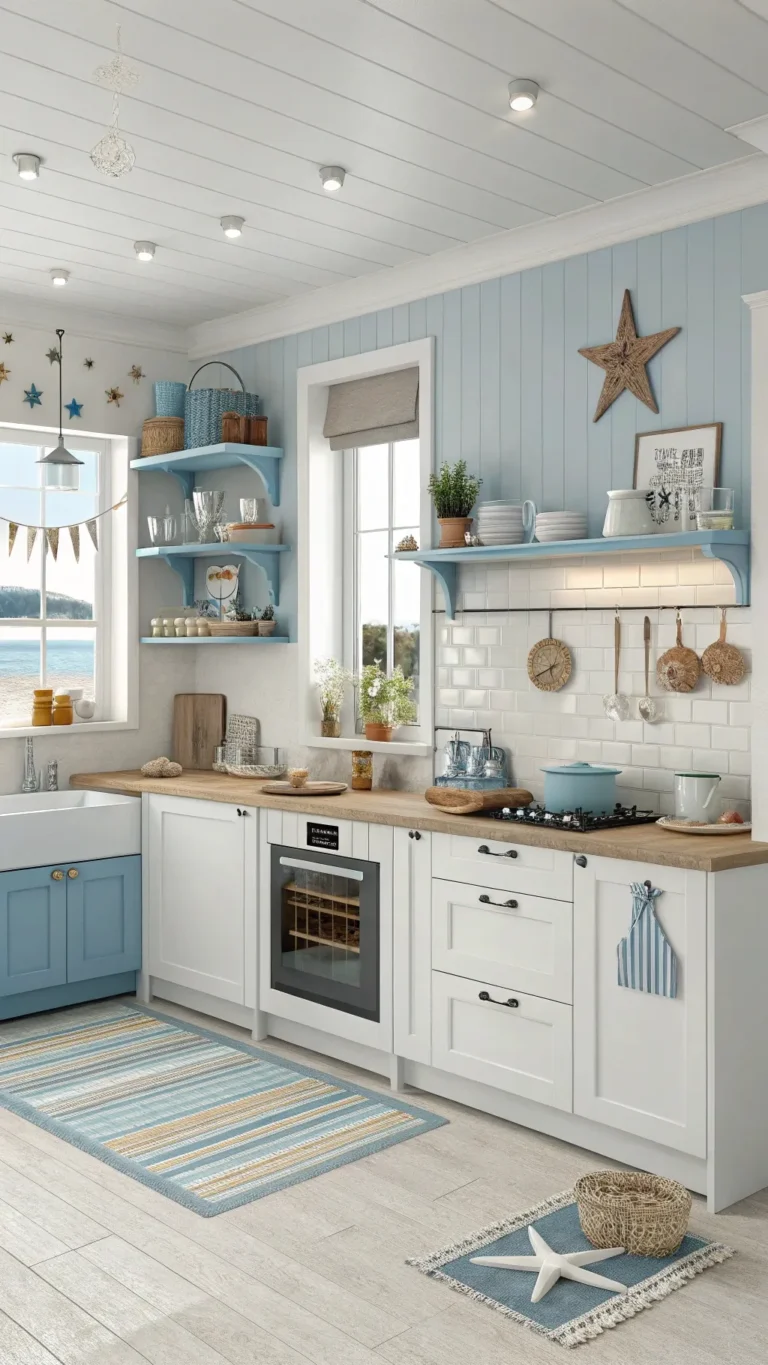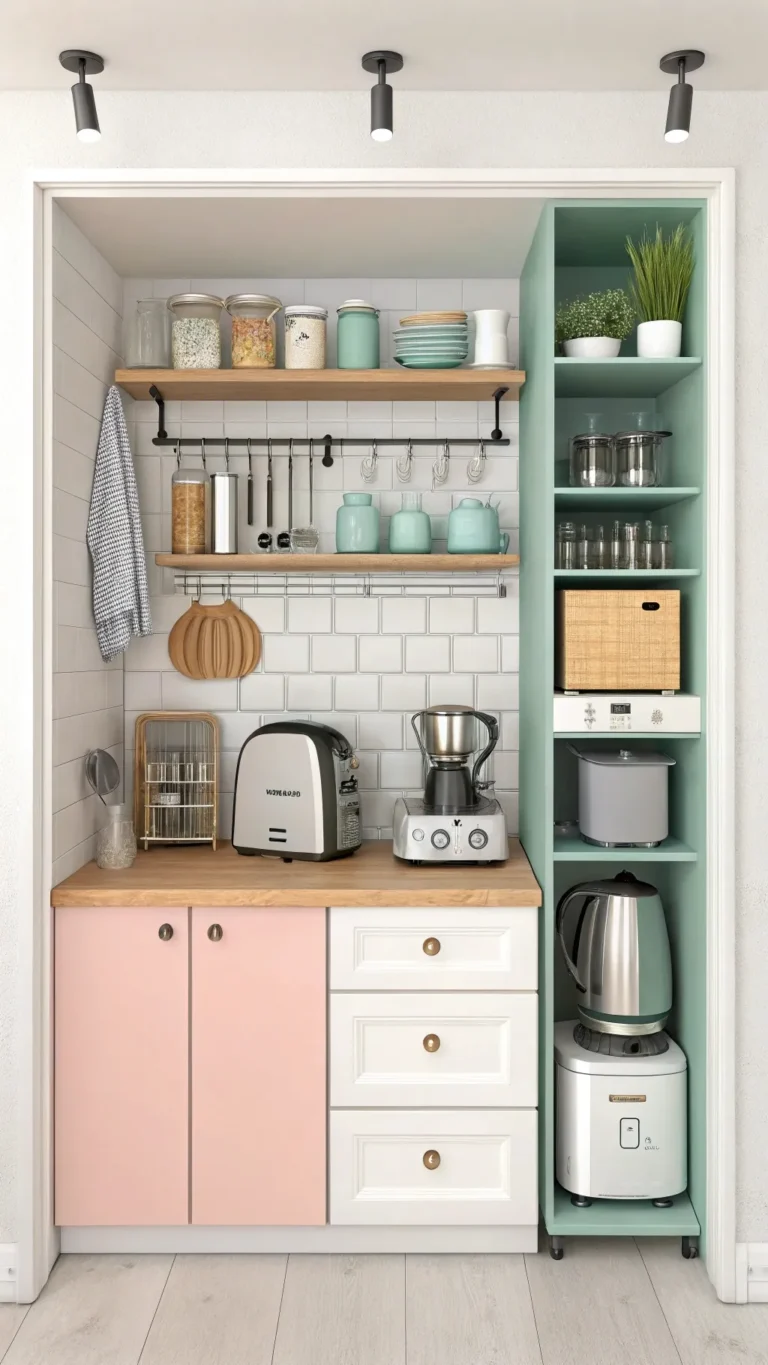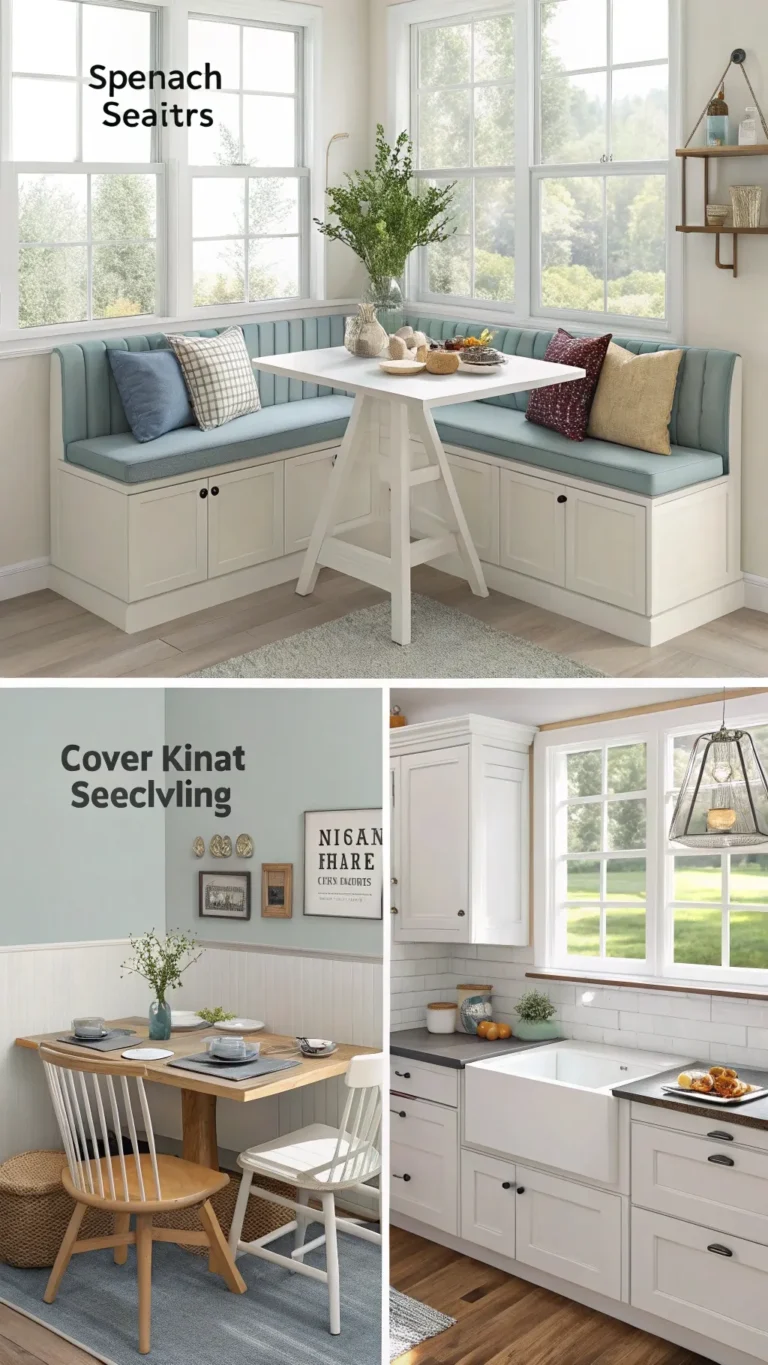Introduction
Does your small kitchen feel tight? Many people face this problem. Limited counter space is common. Storage seems impossible to find. Cooking can feel like a puzzle. Small kitchens often bring challenges. But they don’t need to be messy. They don’t need to look bad. We believe small kitchens can be great. This article shows you how. We share 10 smart layout ideas. These ideas work for small spaces. They turn problems into wins.
You will learn practical ways here. Rethink your small kitchen layout ideas. Make your kitchen work better. Get more storage space. Improve the look and feel. We will guide you step-by-step. Find tips for homeowners. Find tips for renters too. People on a budget will find help. We cover layout types. We cover smart storage. We cover cool design tricks. Ready to make your kitchen amazing? Let’s explore these clever ideas.
The Foundation: Planning Your Small Kitchen Layout
Planning Your Small Kitchen Layout: Where to Start
Good planning is the first step. It is very important for success. Especially in a small kitchen remodel. Before looking at fancy ideas, plan well. Think about how you use your space. What works? What doesn’t? Proper planning makes all the difference. Let’s look at two key ideas.
Idea #1: The Power of the Work Triangle (or Zones for Tiny Spaces)
Have you heard of the work triangle? It connects the sink, stove, and fridge. Good flow between these points is key. It makes cooking easier. In very small kitchens, think zones. We need a prep zone. We need a cooking zone. We need a cleaning zone. Keep these zones close but clear. This helps you move easily. No bumping into things. Think about your kitchen now. Where do you prep food? Where do you cook? Where do you wash dishes?
- Actionable Tip: Draw your kitchen. Mark your current work zones. See where you face problems. Maybe paths cross too much. Maybe zones are too far apart. Finding the problems helps fix them.
- Definition Snippet Idea: The Kitchen Work Triangle connects the sink, fridge, and stove for efficient movement. Zones mean dedicated areas for prep, cooking, and cleaning in tiny kitchens.
An expert might say, “Efficient zones reduce steps. This saves time and energy daily.” Recent studies on kitchen ergonomics support this. They show good flow reduces cooking stress.
Idea #2: Measure Twice, Design Once: Precise Planning is Key
Accurate measurements are vital. Measure your whole kitchen space. Measure walls, doors, and windows. Note where pipes and outlets are. You cannot move these easily. Use graph paper to draw your space. Or use a simple online tool. This helps you see the real size.
Think about walking paths. You need enough room to move. Keep aisles clear. Aim for about 36 inches wide. This allows you to open doors. It allows two people to pass sometimes. A good small kitchen layout needs clear paths.
- Actionable Tip: Draw several layout options. Try putting things in different places. Use paper cutouts for appliances. Move them around on your drawing. See what feels best before you build.
Sub-topic: Understanding Basic Small Kitchen Layout Types
There are common small kitchen shapes. A Single-Wall kitchen has everything on one wall. A Galley kitchen has two parallel walls. An L-Shape kitchen uses two connected walls. Knowing these helps you plan.
(Table Snippet Idea – Content for Table)
| Layout Type | Pros for Small Kitchens | Cons for Small Kitchens |
|---|---|---|
| Single-Wall | Great for very narrow spaces. | Limited counter space. |
| Simple, often cheaper build. | Work triangle is a line. | |
| Galley | Very efficient workflow. | Can feel narrow, like a tunnel. |
| Good separation of zones. | Needs good aisle width. | |
| L-Shape | Uses corners well. | Corner storage can be tricky. |
| Creates open feel. | May need careful zone planning. |
We need good planning for small kitchen design tips. It helps maximize small kitchen space.
[Internal Link Idea: Place link here to “Ultimate Guide to Kitchen Cabinet Organization”]
Maximizing Footprint: Clever Layout Configurations
Clever Configurations: Making the Most of Your Small Kitchen Footprint
Now let’s look at specific layouts. Some shapes work better in small rooms. Smart changes improve how you use space. They make your kitchen feel better. We will explore two popular options. These help maximize small kitchen space.
Idea #3: The Efficient Galley Kitchen Reboot
The galley layout is classic. It has two parallel counters. Or one counter and one wall. It works well in narrow rooms. It offers great efficiency. The sink, stove, and fridge are close. How can we improve a galley? Try keeping one side visually open. Maybe use shorter upper cabinets. Or use open shelves there. Reflective surfaces help too. Think shiny tiles or cabinet fronts. Make sure the aisle is wide enough. About 4 feet is good if possible.
Some galleys have an open end. Or a pass-through window. This connects it to another room. It makes the kitchen feel less closed in.
- Actionable Tip: Use the same counter and cabinet style on both sides. Avoid too much clutter on counters. This makes the galley feel wider. Simplicity is key here.
- Visual Idea: A diagram showing a galley kitchen. Show efficient placement of appliances. Show good aisle width.
Idea #4: The Mighty Mini L-Shape
The L-shape layout uses two adjacent walls. It forms an “L”. This works well in square or corner spaces. It naturally creates separate work zones. It can feel more open than a galley. How do we make it work in a small L? Pay attention to the corner! Use clever storage there. We will talk more about that later. You can extend one “leg” of the L. Make it a small peninsula. This adds counter space. It can also be a small eating spot.
The open end of the L is useful. You might fit a tiny table there. Or create a small dedicated prep area.
- Actionable Tip: Don’t waste the corner space. Invest in a lazy susan. Or buy special pull-out corner shelves. These bring items out to you. No more lost pots in the back!
- Visual Idea: A photo showing a smart small L-shaped kitchen. Highlight the corner solution used. Show how it opens to another area.
Considering the Single-Wall Layout
Sometimes you only have one wall. This is common in studio apartments. A single-wall layout puts everything in a line. Sink, stove, fridge, counter space. It’s challenging but possible. The key is vertical space. Build cabinets up to the ceiling. Use wall-mounted shelves above counters. Maximize every inch on that one wall. It can be the best layout for small kitchen in certain situations.
(Bullet Point Snippet Idea)
- Galley Pros: Very efficient flow. Good for narrow rooms.
- Galley Cons: Can feel tunnel-like. Needs good width.
- L-Shape Pros: Uses corners. Feels more open. Good zones.
- L-Shape Cons: Corner needs smart solutions. May use more floor space.
Vertical & Hidden Solutions: Storage is King (Idea #5, #6, & #7)
Storage is King: Vertical and Hidden Solutions for Small Kitchens
Not enough storage? This is the biggest small kitchen problem. Smart storage is part of small kitchen layout ideas. You must use every bit of space. Think up, down, and inside. Let’s find storage you didn’t know you had. These small kitchen storage ideas are essential.
Idea #5: Go Vertical: Utilizing Wall Space to the Ceiling
Look up! The space above cabinets is valuable. Use cabinets that go to the ceiling. This gives much more storage. It also looks cleaner. No dusty top shelf visible. What about open shelves? They can look great. They make a small kitchen feel airy. But they require neatness. Closed cabinets hide clutter better. Maybe use a mix of both?
Think about narrow vertical spaces. Beside the fridge, maybe? A tall, skinny pull-out pantry works great. Store cans, spices, or bottles there. Use the wall itself. Hang pots, pans, or utensils.
- Actionable Tip: Store things you rarely use on high shelves. Use nice baskets or bins on open shelves. Keep things tidy for a better look.
- Visual Idea: Photo of tall kitchen cabinets reaching the ceiling. Another photo showing a narrow pull-out pantry shelf.
Idea #6: Embrace the Underrated: Under-Cabinet & Toe-Kick Storage
Look down! The space under upper cabinets is useful. Add small hooks for coffee mugs. Install a small shelf for spices. Mount a paper towel holder there. What about the very bottom? The toe-kick area below base cabinets? This space is often wasted. You can install shallow drawers there. Perfect for flat things. Think baking sheets, platters, or linens. Some people hide pet food bowls there. These are clever kitchen solutions.
- Actionable Tip: Search online for organizers made for these spaces. There are many smart products available. They fit right into these unused spots.
- Visual Idea: Picture showing hooks under a cabinet holding cups. Another showing a toe-kick drawer pulled out.
Idea #7: Multi-Functional & Hidden Gems
Make items do double duty. Use a cutting board that pulls out. It adds temporary counter space. Find bowls that nest inside each other. They take up less cabinet room. Look for small tables that fold down. Or tables that expand when needed. A magnetic knife strip saves drawer space. It keeps knives handy on the wall.
Look inside cabinets and doors too. Hang organizers on the back of cabinet doors. Store spices, wraps, or cleaning supplies. Use a pegboard inside a pantry. Hang small tools or measuring cups. Hiding storage keeps things neat. It helps maximize small kitchen space.
- Actionable Tip: Get rid of kitchen items you never use. Be honest with yourself. Less stuff makes organizing much easier. Keep only what you truly need.
- Visual Idea: Photo of a pull-out cutting board above a drawer. Another photo of organizers on a cabinet door.
[Internal Link Idea: Place link here to “Best Space-Saving Kitchen Appliances for Small Apartments”]
Design Tricks & Smart Technology for Style & Function
Design Tricks & Smart Tech: Boosting Style and Function
A good layout is important. But looks matter too! Small kitchen design tips help your kitchen feel bigger. They also make it more stylish. Smart technology can help too. Let’s explore ways to improve looks and function.
Idea #8: Illusion of Space: Lighting, Color, and Reflective Surfaces
Make your small kitchen feel larger. Use light colors. White, cream, light gray, or pastels work well. Light wood cabinets also help. These colors reflect light. They make the space seem open and airy. Dark colors can make a small room feel smaller.
Good lighting is crucial. You need bright overhead light. Add task lighting under cabinets. This lights up your counters for working. Good lighting removes shadows. Shadows make spaces feel cramped.
Use surfaces that reflect light. Glossy backsplash tiles work well. Shiny cabinet finishes help too. Stainless steel appliances bounce light around. A strategically placed mirror can visually double space. But be careful where you put it.
A recent design survey showed light colors remain popular. Over 60% of small kitchen owners prefer them for openness.
- Actionable Tip: Use layered lighting: main ceiling light, under-cabinet lights, maybe a pendant light. Paint walls and cabinets in light, coordinating colors. Choose at least one reflective element.
- Visual Idea: Photo of a small kitchen using white cabinets, light counters, and good under-cabinet lighting.
[Internal Link Idea: Place link here to “Choosing the Right Paint Colors for Small Spaces”]
Idea #9: Smart Technology Integration (2025 Trend)
Modern technology offers compact solutions. Smart appliances can fit small kitchens. They often save space and energy. Think about smart faucets. They turn on with a touch. They can save water. Compact smart ovens exist. Small smart refrigerators are available. Induction cooktops heat fast and precisely. They have smooth surfaces, easy to clean. Smart lighting lets you control brightness. You can change light color with an app.
Sustainability is also a trend. Look for energy-efficient appliances. Choose eco-friendly materials. Bamboo countertops are sustainable. Recycled glass tiles look great. These choices are good for the planet. They also add modern style. These are clever kitchen solutions.
- Actionable Tip: Think about your daily kitchen tasks. Choose smart tech that helps you most. Maybe a smart faucet if you cook often. Or compact appliances if space is tightest. Start small.
- Visual Idea: Image showing a slim induction cooktop. Another image showing a stylish backsplash made of recycled material.
[Internal Link Idea: Place link here to “Top Compact Dishwashers and Refrigerators”]
[External Link Idea: Place link here to a reputable design magazine article on kitchen tech trends]
Practical Implementation & Budget Considerations (Idea #10)
Practical Implementation: Making Your Small Kitchen Dreams a Reality
You have great small kitchen layout ideas. Now, how do you make them happen? Practical steps are needed. Often, budget plays a big role. Let’s talk about making changes real. We will focus on flexibility and cost.
Idea #10: Think Multi-Functional & Mobile
Flexibility is key in small spaces. Use items that can move or change. A kitchen cart on wheels is fantastic. Roll it where you need extra counter space. Use it for serving drinks or food. Then roll it away when done. Many carts offer storage shelves too.
Consider a fold-down table. Mount it to the wall. Fold it up for meals or prep. Fold it down when you need floor space. Look for small benches with storage inside. Use furniture that serves two purposes. This adapts the room to your needs.
- Actionable Tip: Find pieces that match your kitchen style. Look for sturdy carts or tables. Ensure they fit the space when open and closed. Choose items with built-in storage.
- Visual Idea: Photo of a nice kitchen cart used as an island. Another photo of a wall-mounted fold-down table.
Sub-topic: Budget Small Kitchen Remodel Tips
Remodeling can be expensive. But you can make big changes on a budget. Focus on updates with high impact. Painting cabinets costs less than replacing them. Changing cabinet handles is easy and cheap. New lighting fixtures can transform the feel. Adding smart organizational tools helps a lot.
Decide what matters most. Does the layout really need changing? Or can cosmetic updates improve it enough? Layout changes (moving plumbing, walls) cost more. Cosmetic changes cost less. Think about what you can do yourself. Painting is often a good DIY project. Complex plumbing or electrical work needs professionals.
- Actionable Tip: Start with the cheapest, easiest fix: decluttering. Get rid of things you don’t use. Organize what’s left. This costs nothing but makes a huge impact. You might find you need less storage.
[Internal Link Idea: Place link here to “DIY Kitchen Updates on a Budget”]
[External Link Idea: Place link here to an authority site on sustainable home design, if relevant]
(FAQs – Approximately 250 words)
Small Kitchen Layouts: Your Questions Answered
People often ask similar questions. Here are answers to common ones. We hope this helps clear things up.
- Q1: What’s the
best layout for a small kitchen?- A: It changes based on room shape. Galley and L-Shape layouts often work well. They allow for efficient work zones. Focus on good flow between sink, stove, and fridge areas.
- Q2: How can I make my
small kitchen layoutlook bigger?- A: Use light paint colors. Ensure lots of bright light. Add reflective surfaces like glossy tiles. Keep counters clear of clutter. Vertical lines (tall cabinets) also help.
- Q3: Can I change my
small kitchen layoutif I’m renting?- A: Big changes like moving walls are usually not allowed. Focus on things you can take with you. Use freestanding shelves or carts. Improve lighting with plug-in fixtures. Maximize organization inside cabinets. Add a nice rug.
- Q4: How much does a
budget small kitchen remodeltypically cost?- A: Costs vary greatly. A simple refresh (paint, hardware) might cost a few hundred dollars if DIY. Redoing cabinets, counters, and floors costs thousands. Moving plumbing or walls costs much more. A National Kitchen & Bath Association study suggests minor updates average $5,000-$15,000, but DIY can be lower. Get quotes for specific jobs.
- Q5: What are some essential
small kitchen storage ideas?- A: Use vertical space (tall cabinets, shelves). Add pull-out organizers in cabinets. Use door backs for storage. Magnetic strips for knives save space. Under-cabinet hooks are useful. Toe-kick drawers add hidden storage.
(Schema Markup Note: Implement FAQPage schema for this section)
Conclusion
Transform Your Kitchen with Clever Layout Ideas
A small kitchen doesn’t mean small possibilities. Your kitchen can be stylish. It can work very well for you. We have shared 10 clever small kitchen layout ideas. Remember the power of good planning. Smart storage makes a huge difference. Design tricks can fool the eye. Using vertical space is key. Mobile furniture adds flexibility.
We hope these ideas inspired you. Look at your own kitchen now. What frustrates you most? Which ideas seem possible for you? Choose one or two tips to start with. Begin your kitchen transformation journey today. Small changes can lead to big results. We invite you to share your own clever kitchen solutions in the comments below! Let’s help each other make the most of our kitchens.
